For good reason, mountain climber exercises are climbing the summit of popularity in the fitness world. They’re a potent full-body workout that combines strength, agility, and cardiovascular endurance, all wrapped into a single move.
The Science Behind Mountain Climber Workouts
The answer to the question of “why you need mountain climber workout to strengthen your muscles” is as follows:
- Harnessing multiple muscle groups
- Cardio exercise and strength gains
Harnessing Multiple Muscle Groups
Mountain climber exercises are a journey that engages multiple muscle groups simultaneously. The primary movers in this workout are the abs and hip flexors, but you’re also putting your arms, chest, and quads to work. Additionally, your shoulders, back, and legs are forced to stabilize your body while you’re in motion.
 Cardio Exercise and Strength Gains
Cardio Exercise and Strength Gains
The trek to increased strength and endurance often faces the dangers of monotony and fatigue. However, mountain climbers offer a unique challenge and help increase your heart rate and oxygen intake. This aerobic exercise efficiently burns calories, promoting overall body strength and endurance.
The mountain climber exercise is a great way to strengthen your core, as it involves engaging your abdominal muscles, hip flexors, and lower back.
Why Mountain Climber Exercise for Strength and Endurance?
Mountain climber workouts allow you to hike towards improved strength and endurance, compared to static exercises like planks. The continuous movement of alternating knees to the chest elevates your heart rate, promoting cardiovascular health while working the core and several muscle groups.
The Basics: Proper Form and Technique for Mountain Climbers
Several techniques help to get better results from workouts. Some of them are as follows:
- Mastering the Plank position
- Movement: engaging the knees and core
Mastering the Plank Position
Maintaining proper form is crucial to ensure an effective mountain climber workout. Start in a high plank position, and hands placed shoulder-width apart. Keep your back straight, engage your core, and ensure your body forms a straight line from head to toe.
Movement: Engaging the Knees and Core
Begin the workout by pulling one knee towards your chest, ensuring your toes just lightly tap the floor. Alternate the movement with the other leg, speeding up as you get comfortable. Remember to keep your abs engaged and your hips at the same level as your shoulders to prevent any potential injury.
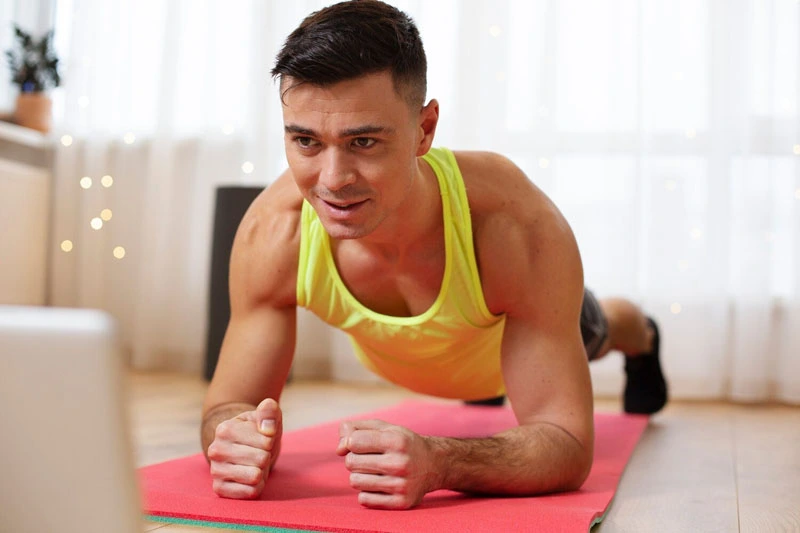
Planning Your Mountain Climber Workout
Incorporating mountain climbers into your workout routine can be as easy as a downhill stroll or as challenging as a rocky ascent, depending on your fitness level. Aim for four sets of 15 to 20 reps, or time yourself for 30-second intervals. As your strength and endurance improve, increase your intensity or add more sets.
Beginner’s Guide to Mountain Climber Form
There is a guide for beginners who have just initiated mountain climber workouts.
- Ground rules for plank position
- Engage your legs and core
Ground Rules for Plank Position
A mountain climber exercise starts from the plank position, a powerhouse move. Set your hands on the ground shoulder-width apart to execute the plank correctly. Ensure your back is straight and your core is engaged. Maintaining a straight line from head to toe is vital to maximize the benefits and avoid injury.
Engage Your Legs and Core
The beauty of mountain climbers lies in the simplicity of their movement. Bring one knee towards your chest, ensure your toes lightly touch the floor, then alternate with the other leg. As you find your rhythm, increase your speed. But remember, safety first! Keep your abs engaged and ensure your hips align with your shoulders.
If you’re a beginner or an advanced mountain climber, you can also use multipurpose hangers to carry gym essentials.

Advanced Mountain Climber Variations
Challenge yourself with various mountain climber exercises variations. Some popular ones include the cross-body mountain climber, which works the obliques, and the Spiderman version, which also targets the lower abs. These will keep your workouts exciting and challenging, improving your strength and endurance.
Pairing Mountain Climbers with Other Exercises
Mountain climbers are versatile and can be combined with other exercises for a well-rounded workout. Consider pairing them with push-ups, squats, or burpees to engage different muscle groups and avoid fitness plateaus.
Diet and Nutrition for Enhanced Results
To complement your workouts, remember that a balanced diet and adequate hydration are vital. Consuming lean proteins, whole grains, and plenty of vegetables can support muscle recovery and growth. And don’t forget to hydrate to replace the water lost through sweat!
Complementing Mountain Climbers with Other Workouts
A Versatile Exercise
One of the reasons why mountain climber exercises are a favorite among fitness enthusiasts is their versatility. You can pair them with push-ups for an upper-body burn, squats for lower-body strength, or burpees for a full-body challenge.
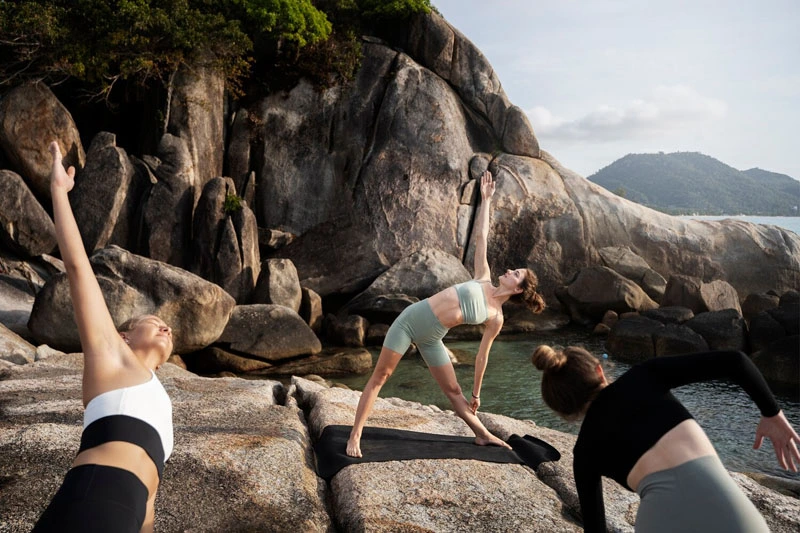
The Journey to Fitness
Embarking on your fitness journey with mountain climber exercises might feel like preparing for a mountain hike. You need effort, skill, and the right gear – in this case, a yoga mat or a non-slip floor should suffice.
The View from the Top
Each set of mountain climbers takes you closer to the summit of your fitness goals. With every knee drive, you push past fatigue, just as a hiker pushes past rocky trails to enjoy the breathtaking view from the top.
The Night Camp: Recovery
After a day’s trek, it’s essential to set up camp for the night, allowing your body to rest and recover. Quality sleep is just as important as the exercise itself – it’s when your body repairs and builds muscles.
The Elements: Adapting to Challenges
Training can sometimes feel like battling the elements. Some days might be cold, and your motivation is low. On other days, you might feel like you’re battling a snowstorm of stress. But each step, each rep, builds your strength and endurance, helping you adapt and conquer.
Climbing Gear: Proper Form
In mountain climbing, having the correct gear – the harness, ropes, and belay devices – is crucial. In mountain climber exercises, your gear is proper form. The plank position is your harness, engaged core, rope, alternating knee drives, and belay device.
The Climb: Exercise Routine
Your daily exercise routine can be likened to the climb itself. It’s more than just the view at the summit; it’s about the exhilaration of the trek, the effort exerted, the oxygen filling your lungs with each deep breath, and the reward of improved fitness at the end of each session.
The Reward: Strength and Endurance
The ultimate reward isn’t just the summit view; it’s the strength and endurance you’ve built on your journey. Just as every rock scaled and every icy patch navigated on a mountain trek enhances a climber’s skill set, every rep of the mountain climber exercise builds muscle strength, resilience, and cardiovascular health.
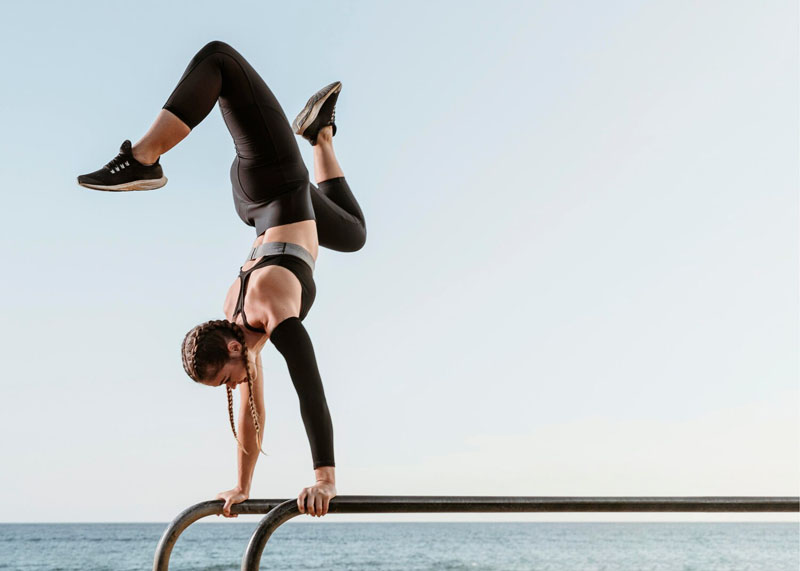
Frequently Asked Questions
Can mountain climbers help improve my posture?
Yes, because mountain climbers engage the core muscles essential for maintaining good posture.
Is it better to do mountain climbers fast or slow?
Both methods have benefits. Going faster increases cardio intensity, while going slower focuses more on strength and stability.
Can mountain climbers help tone my abs?
Since mountain climbers are a core-focused exercise, they can help tone your abs with regular practice.

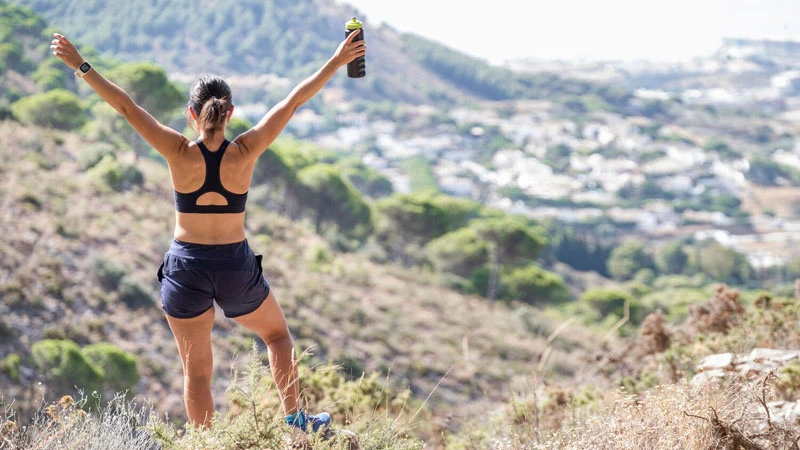
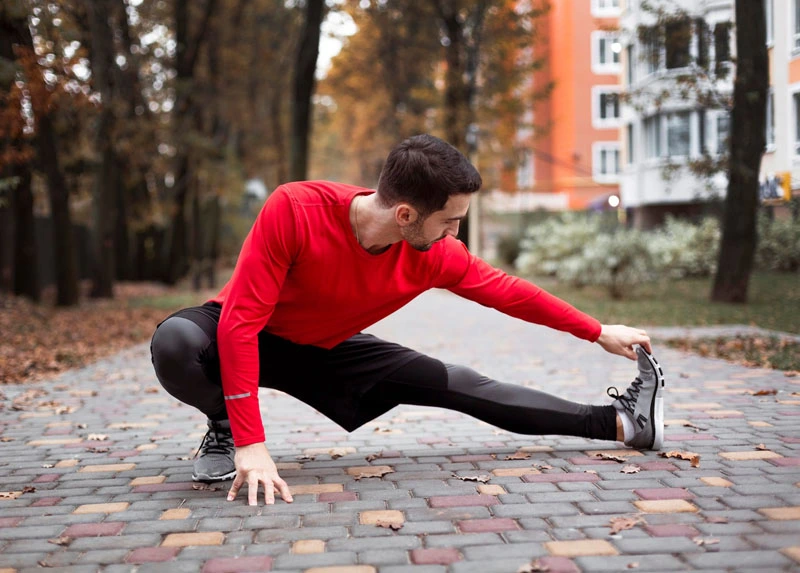 Cardio Exercise and Strength Gains
Cardio Exercise and Strength Gains